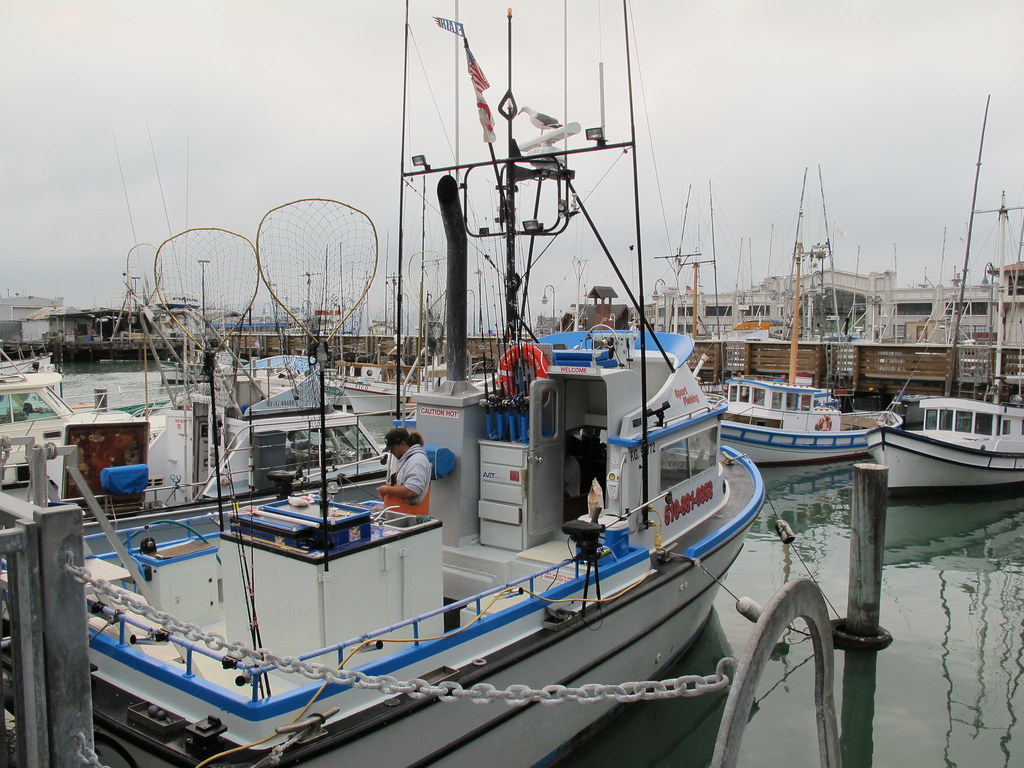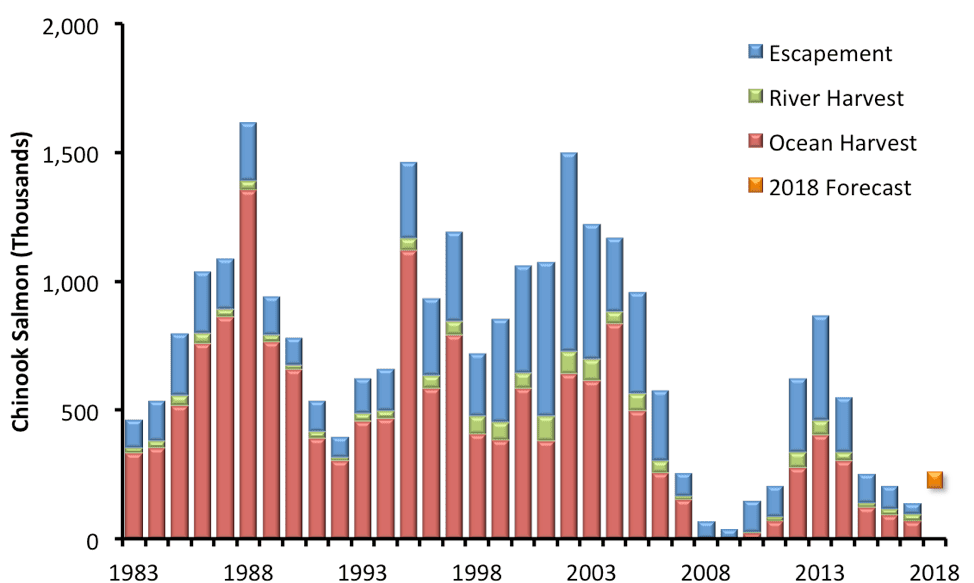Monday May 21, 2018

Every year, the Pacific Fishery Management Council (PFMC) publishes a report on the previous year’s salmon fisheries along the West Coast. The report details harvest totals and socioeconomic benefits for the California ocean fishery, and escapement totals, or the number of salmon that “escaped” the fishery and returned to the Sacramento and San Joaquin rivers. The report also provides an opportunity to compare these numbers with the preseason prediction that was used to set harvest regulations for that year. Inaccurate preseason predictions can have severe consequences: underestimating the salmon population can lead to excessively restrictive fishing regulations, while overestimating can lead to over-harvest, and fewer salmon returning to rivers. In 12 of the last 15 years, PFMC predictions have overestimated the size of the population (Figure 1), leading to higher than expected harvest rates and reduced escapement to Central Valley streams.

Figure 1. Percent difference from PFMC average annual preseason Sacramento Index forecast relative to the actual Sacramento Index observed, 1985–2017.
The results of the 2017 fishing season in California reveal both an underwhelming harvest and shockingly low numbers of fish returning to rivers in the Central Valley, likely reflecting both the impacts of drought and the challenges of accurately forecasting salmon abundance. In California, the PFMC report focuses primarily on fall-run Chinook salmon in the Sacramento River Basin, as this population contributes the majority of fish caught in the ocean fishery. The metric used to represent this abundance is the Sacramento Index (SI), which is the total number of adult fish (ages 3-5) projected to be available in the ocean that will either be harvested (in the ocean or river), or will escape to spawn in natural areas and hatcheries in the Central Valley. The preseason forecast for 2017 was an expected SI of 230,700 fish, with a total projected spawning escapement (hatchery and natural area) of 133,242 fish, based on fishing regulations and quotas. This escapement would have exceeded the management goal of 122,000 hatchery and natural area spawners.

Figure 2. The Sacramento Index: Fall-run Chinook salmon ocean harvest, river harvest, and escapement in the Sacramento River, 1983–2017.
However, the 2017 salmon season resulted in an actual SI of 139,997 fish, meaning that the preseason forecast overestimated the actual population by more than 65%. More troubling is the fact that only 44,574 fall-run Chinook salmon (hatchery and natural-area spawners) returned to spawn in the Sacramento River Basin in 2017. This was less than half of the previous year’s total, and close to the lowest year on record during the fishery collapse of 2008-2009 (Figure 2). Salmon that returned to hatcheries (27,039) exceeded those that returned to natural area returns (17,535), which was a reversal of the previous year (Figure 3). However, hatchery-origin fish likely made up a large percentage of the natural-area spawners as well, as the majority of hatchery fish are unmarked, and off-site releases of juvenile hatchery salmon have increased in recent years, which has been linked to higher straying rates of returning adults (Palmer-Zwahlen and Kormos 2015).

Figure 3. Sacramento River adult fall-run Chinook escapement, 1970–2017. Source: PFMC 2018.
The reduced population of returning salmon in 2017 was not surprising given the lingering effects of a historic multi-year drought, since many of the returning fish would have hatched during particularly tough conditions in 2014. However, one area of optimism from the 2017 salmon season was escapement to the San Joaquin River, which generally constitutes less than 10% of the total Central Valley escapement. In 2017, a total of 16,250 fall-run Chinook salmon returned to natural areas and 16,104 salmon returned to hatcheries (i.e., Mokelumne and Merced River) of the San Joaquin Basin, representing 32% of the total fall-run escapement to the Central Valley. The total San Joaquin Basin escapement of 32,354 fish surpassed the previous year’s total (26,331), which had been the highest since 2002. It is not clear why the proportion of escapement has been relatively high in the San Joaquin Basin over the past few years, but it may be due in part to increased trucking and release of hatchery smolts at off-site locations during the drought, and the resulting increase in stray fish from other basins.

Figure 4. Commercial exvessel value and price per pound, 2006–2017. Source: PFMC 2018.
As expected, the commercial fishery harvest in 2017 was very poor compared to previous years, with landings revenues (coastwide exvessel value) totaling $4.9 million – this is 85% below the 1979–1990 inflation-adjusted average of $31.8 million (Figure 4). A total catch of only 42,261 salmon represents less than a quarter of the average catch over the previous five years (2012–2016 average = 169,437). Commercial fishing effort (boat days fished) was approximately half of recent years and fewer commercial vessels participated in the fishery. Only 398 commercial vessels made salmon landings in 2017, the fewest since 2010, and 39 fewer than last year. While the average California exvessel price (i.e., price received at the dock) for troll-caught Chinook salmon was at its highest since 1977 ($9.90 per pound, inflation-adjusted), the total exvessel value of the commercial fishery was the lowest since 2010 (Figure 4). After a disappointing year in 2017, anglers across the state are hoping to catch a break. In coming weeks, we’ll review the preseason predictions for the 2018 fishing season and share other noteworthy findings from the 2017 salmon season.
This post featured in our weekly e-newsletter, the Fish Report. You can subscribe to the Fish Report here.
